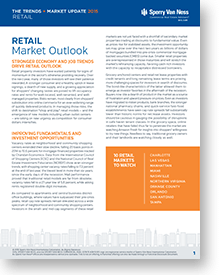If you attended this years ICSC RECon in Las Vegas then you know retail is on the tip of the tongue of every commercial real estate investor. With acquisitions high, it’s important to understand retail CRE concepts. One of the most important concepts in retail property is the anchor.
What is a Retail Anchor?
 A retail anchor is a store or other tenant that drives traffic to a retail center or area.
A retail anchor is a store or other tenant that drives traffic to a retail center or area.
While large shopping malls typically use department stores as anchors, most private commercial real estate investors buy smaller properties. These strip centers are usually anchored by a grocery store like Safeway, Kroger or Piggly Wiggly or by a drug store like a Walgreen’s, CVS or Rite-Aid. Anchored centers typically carry lower cap rates due to the fact that investors usually prefer them.
Many anchored centers are actually “shadow anchored.” This means that an anchor store is present, but is not a part of the center. A good example of this would be a strip center with a Target store. Since Target almost always owns their stores, the center is shadow anchored by the Target. You can buy the center, and it can benefit from the presence of the Target, but you won’t own the Target itself. If you are considering a shadow anchor center, make sure that you have a good understanding of where the shadow anchor actually is. I have seen brokers describe centers as “shadow anchored” when the anchor is located kitty-corner across a major intersection.
Anchored and shadow anchored centers are some of the best commercial real estate investments. They offer the stability of a large tenant combined with a diverse income stream. Many anchored centers also have a tenant mix which performs well in both up and down economies.
What do you think about anchored retail? Please share your thoughts below.
To read more on retail markets in the commercial real estate industry, download the 2015 Retail Market Update report here.
